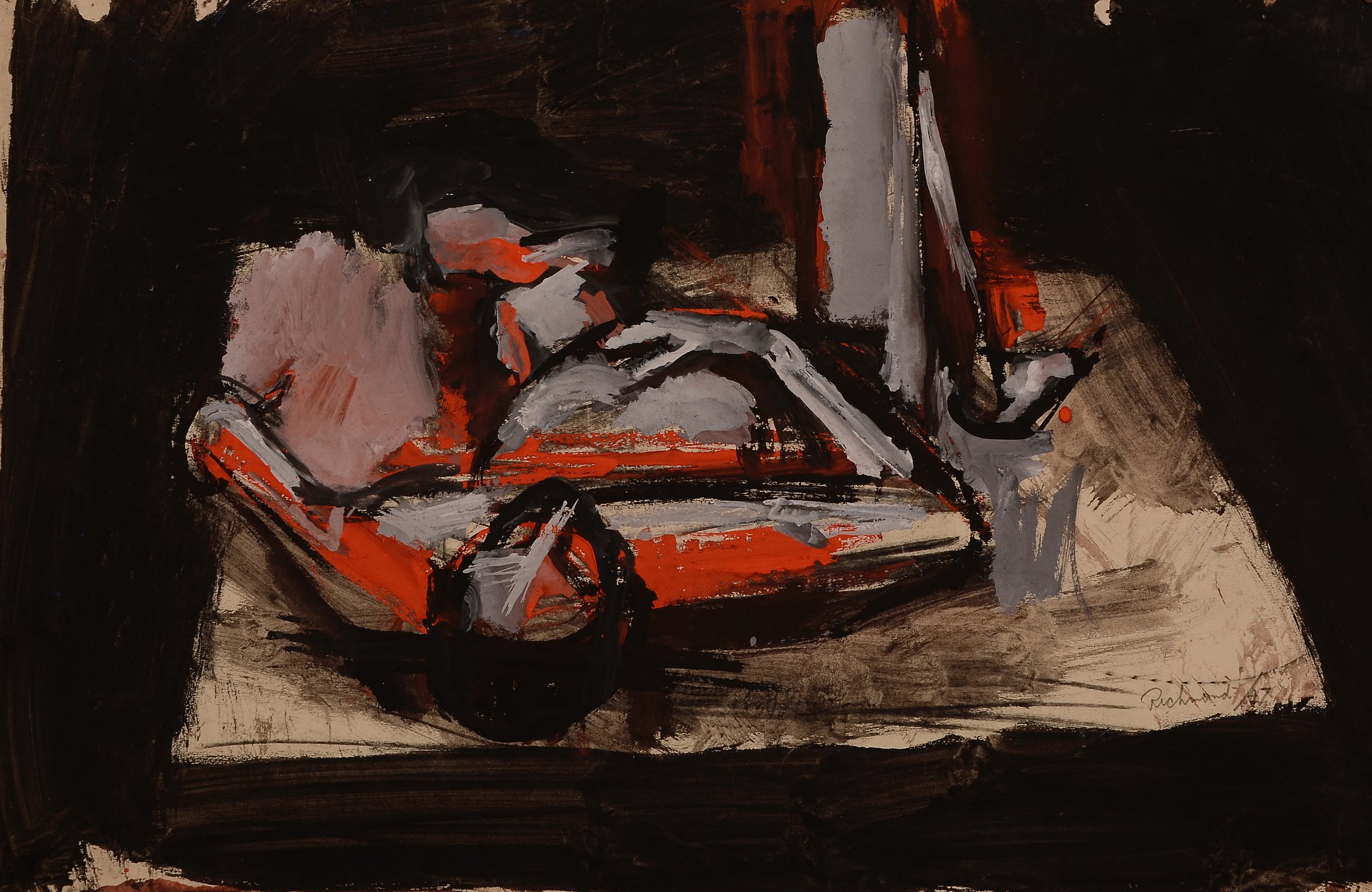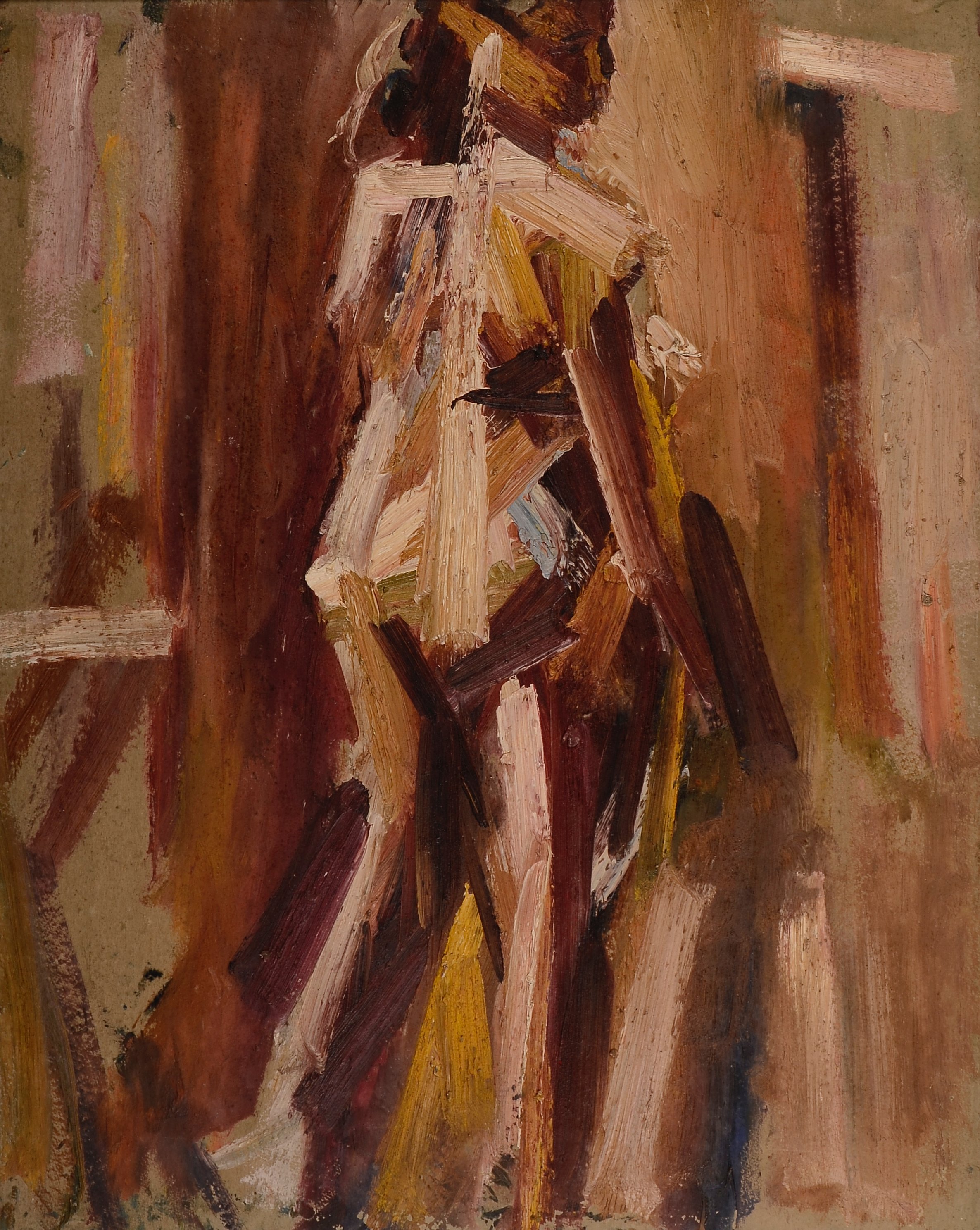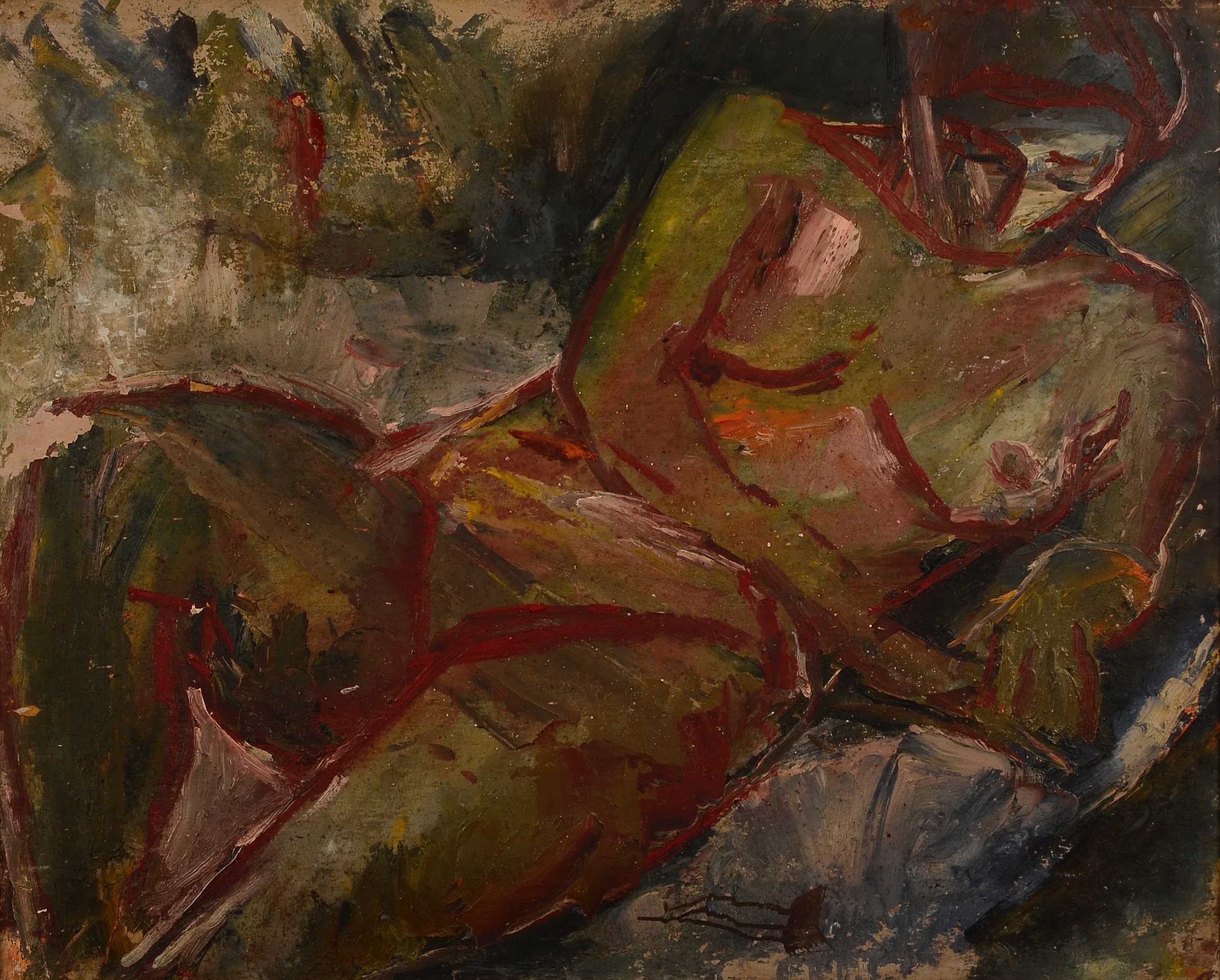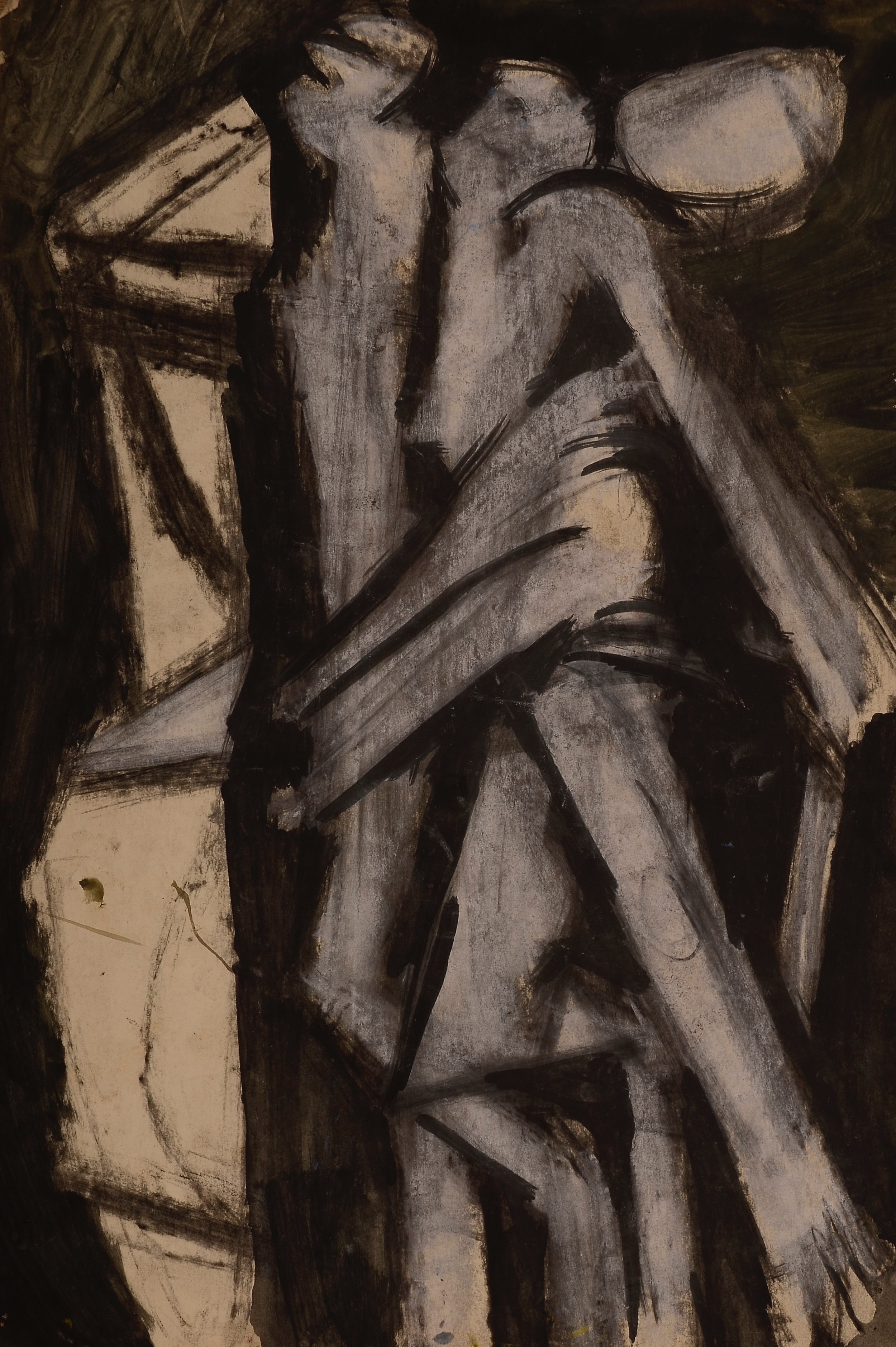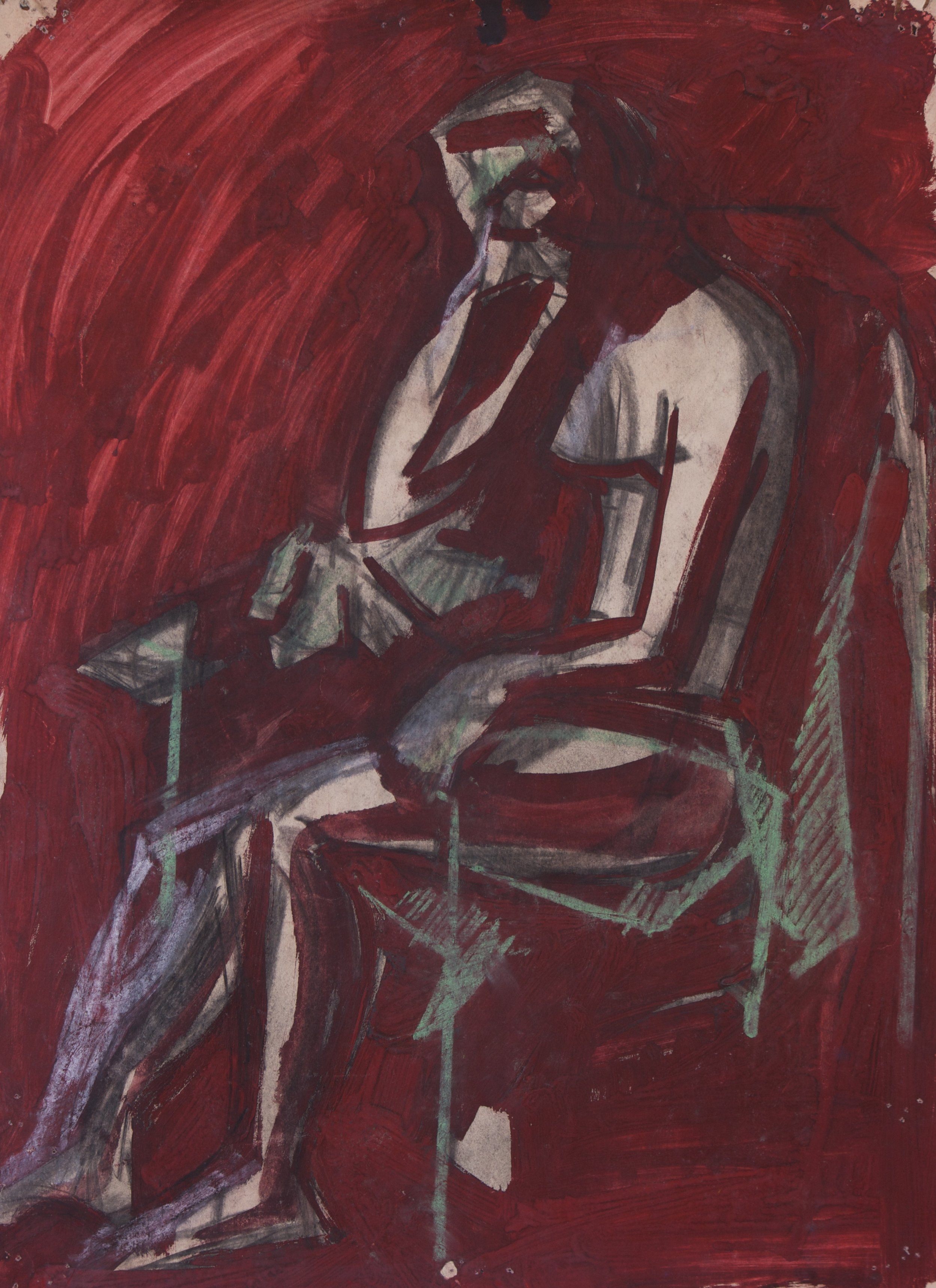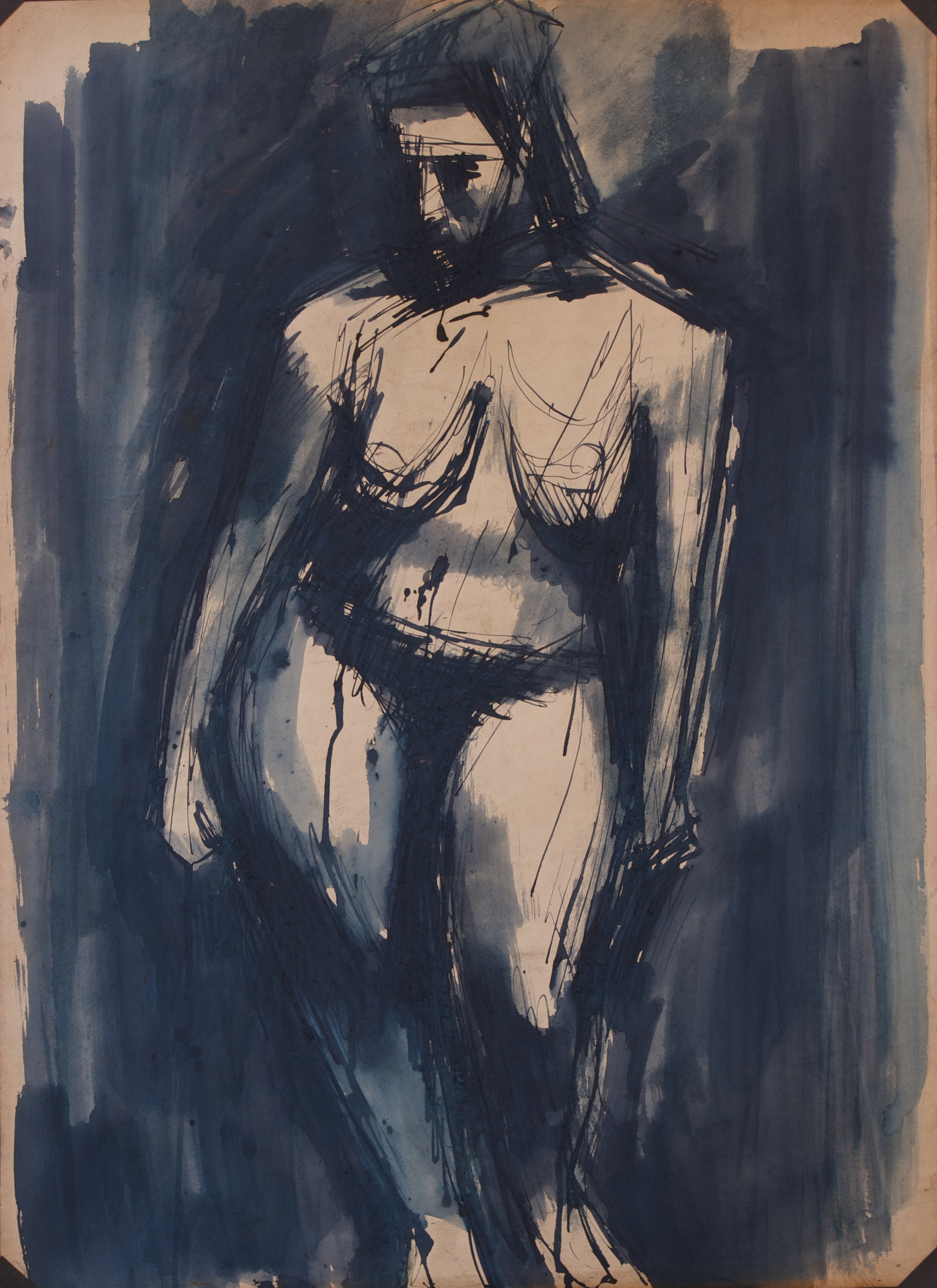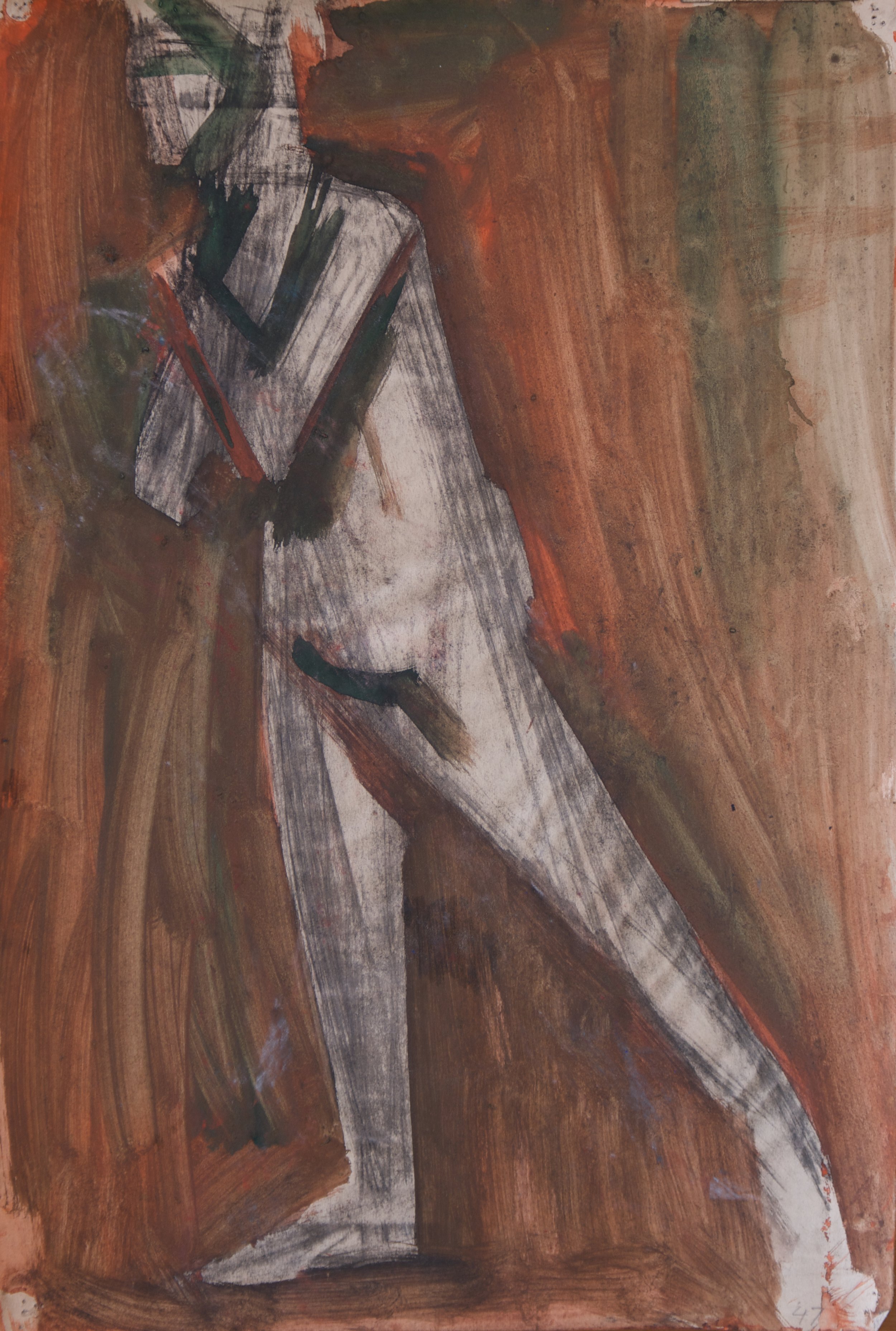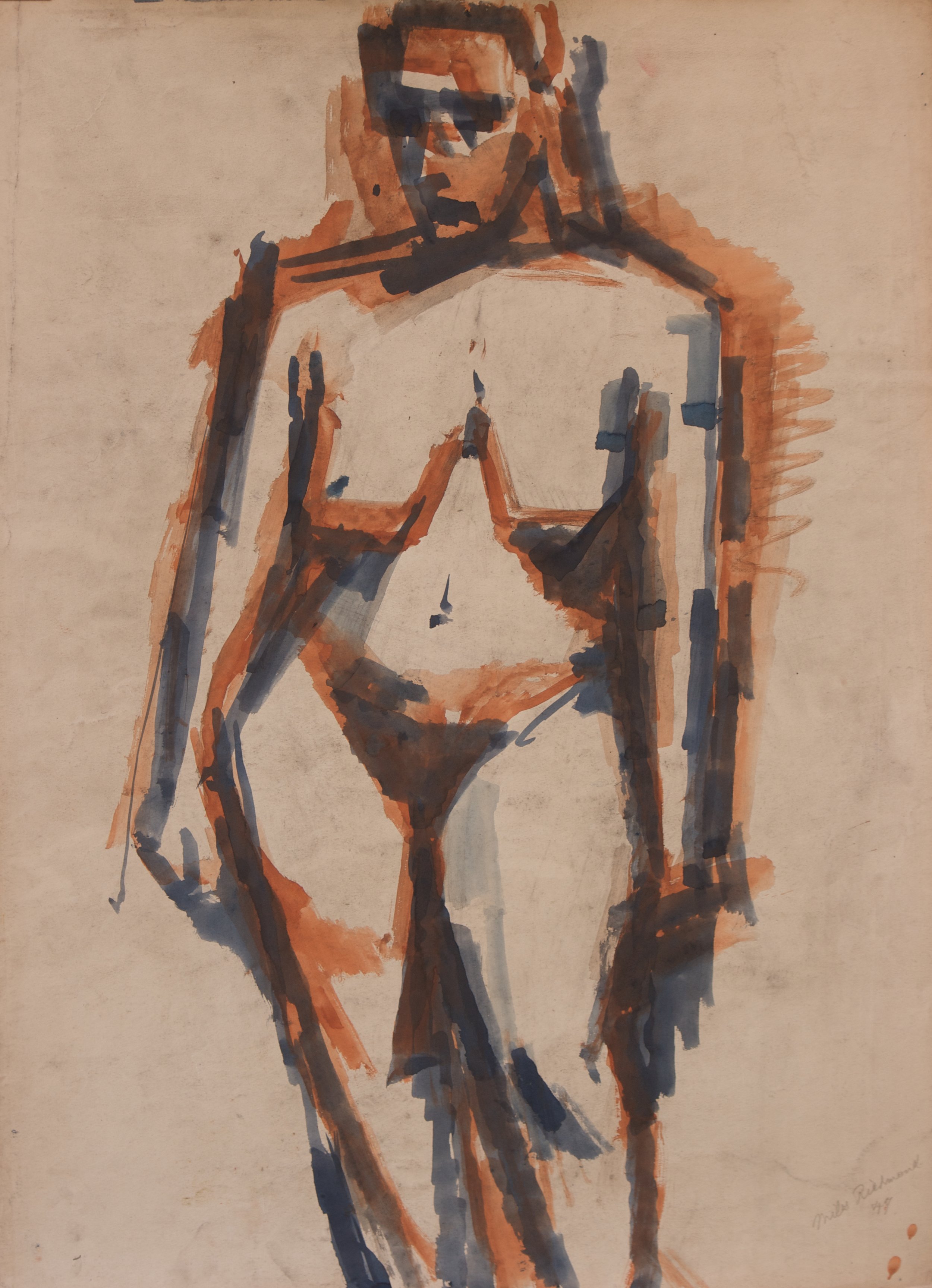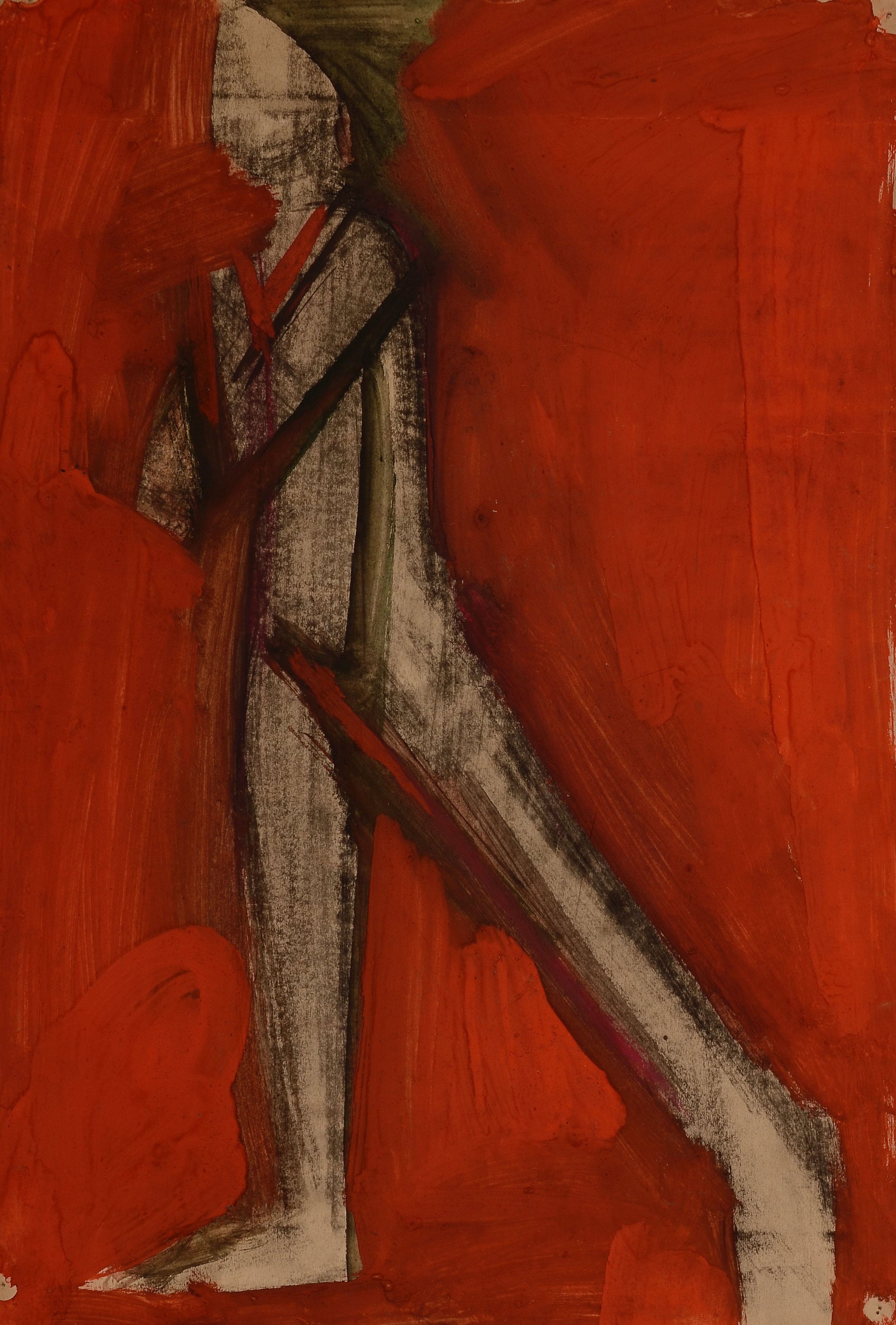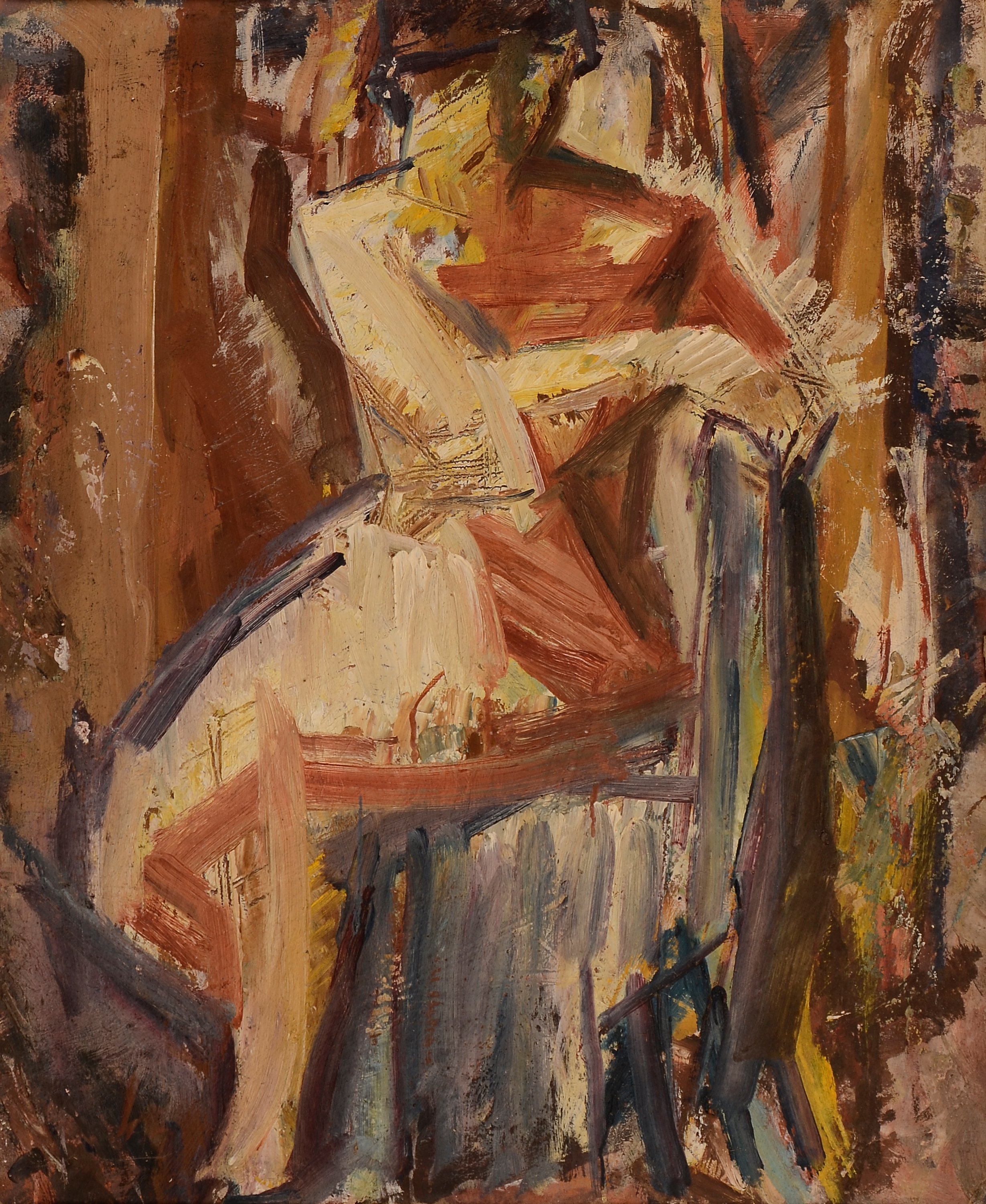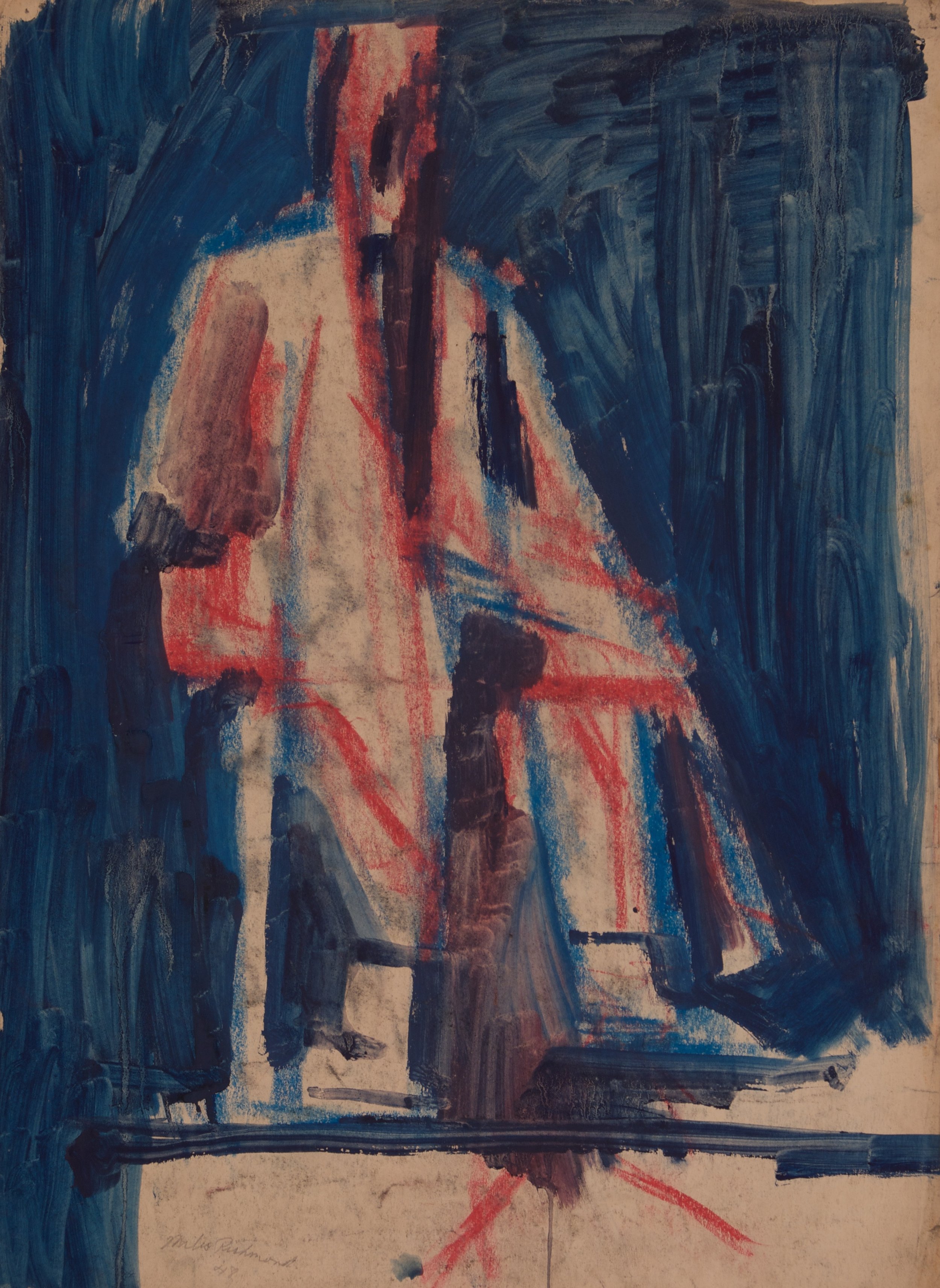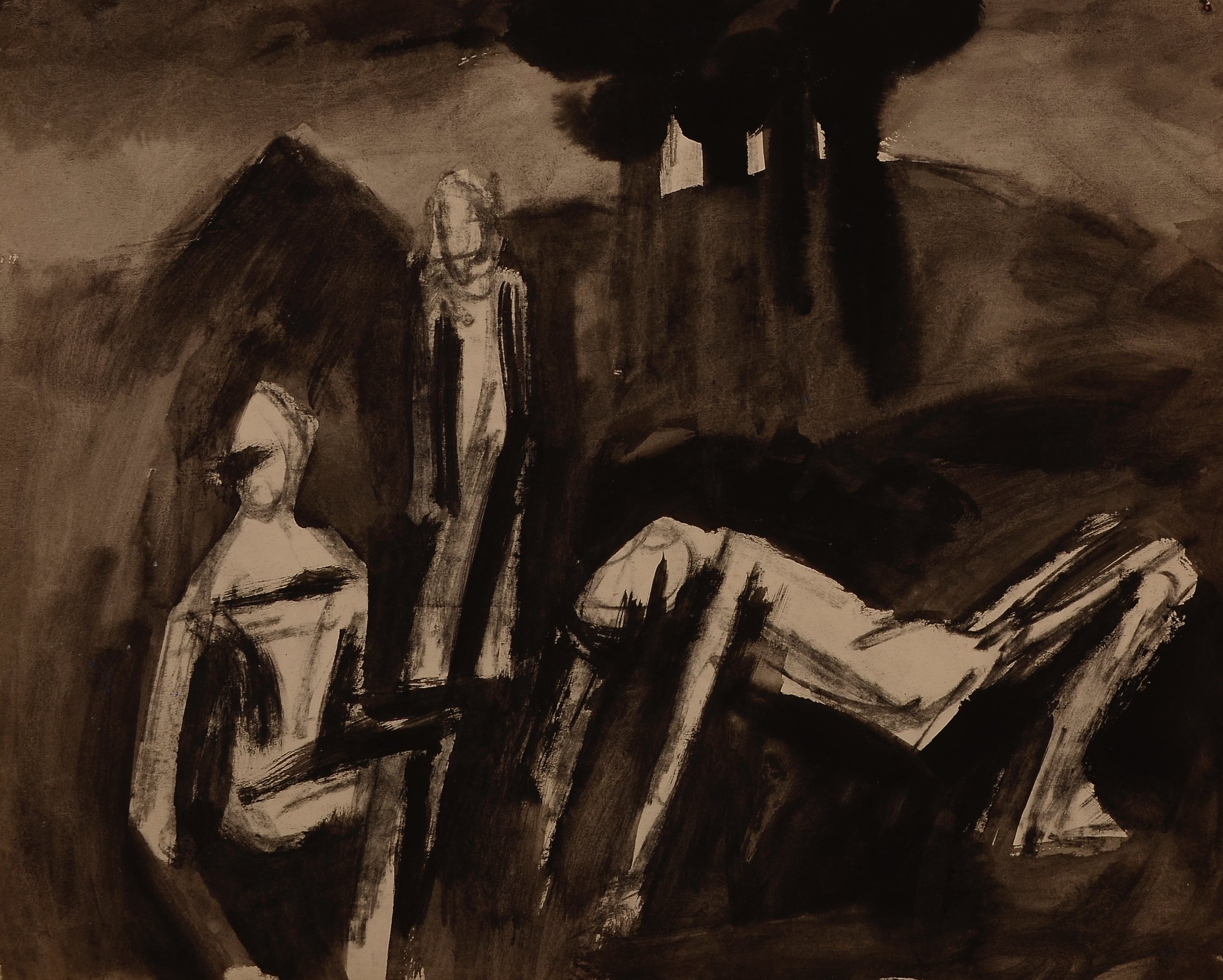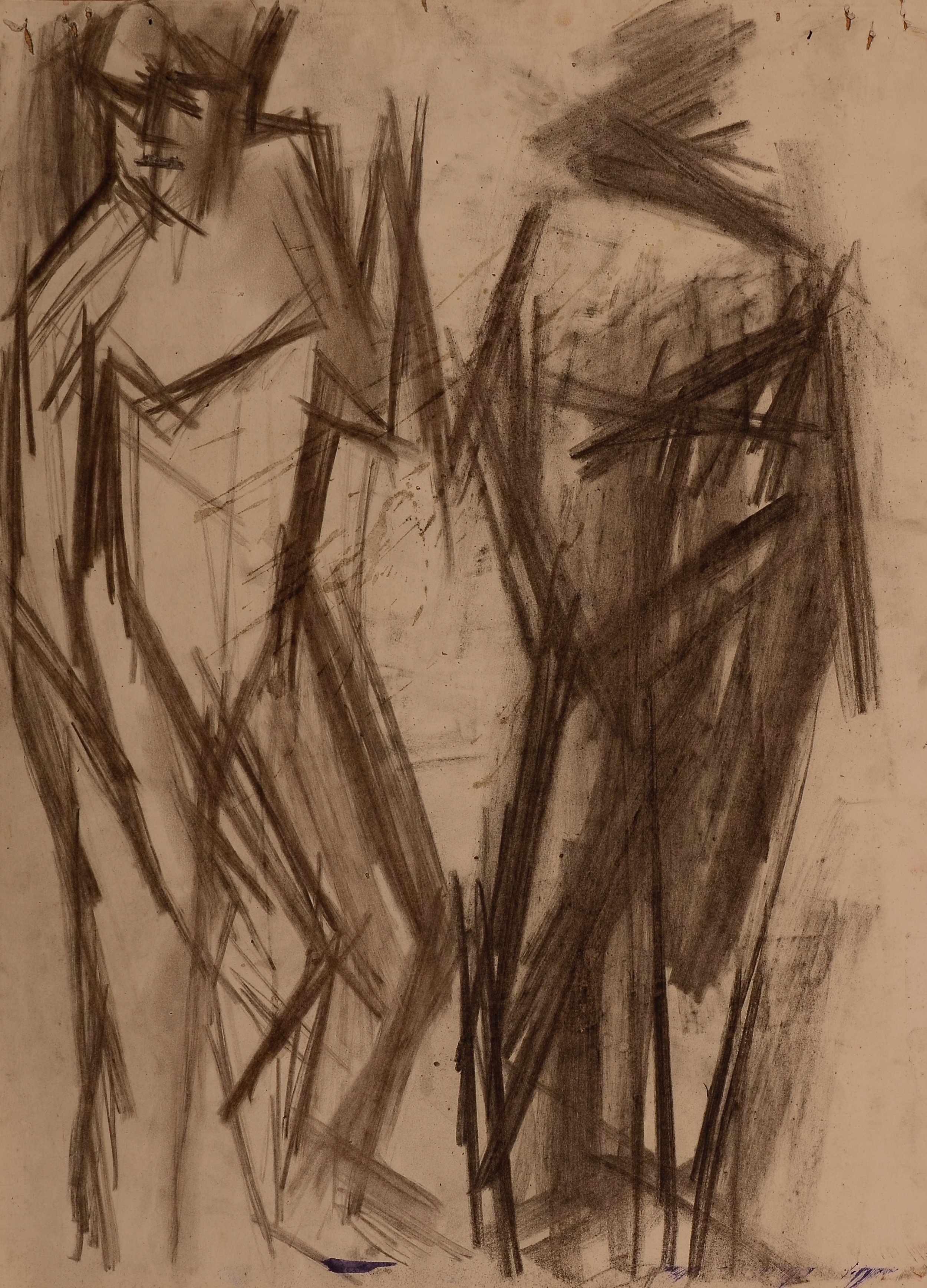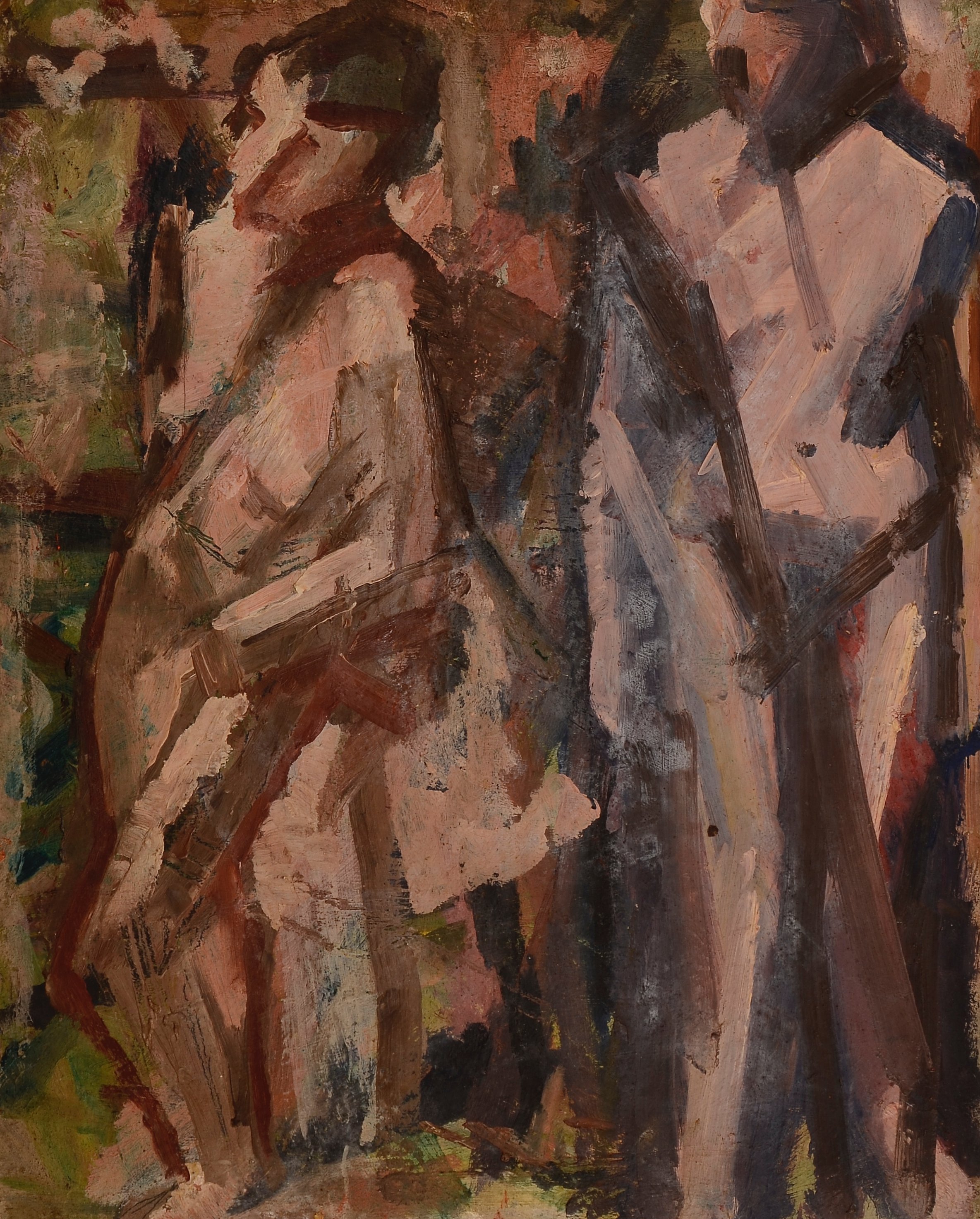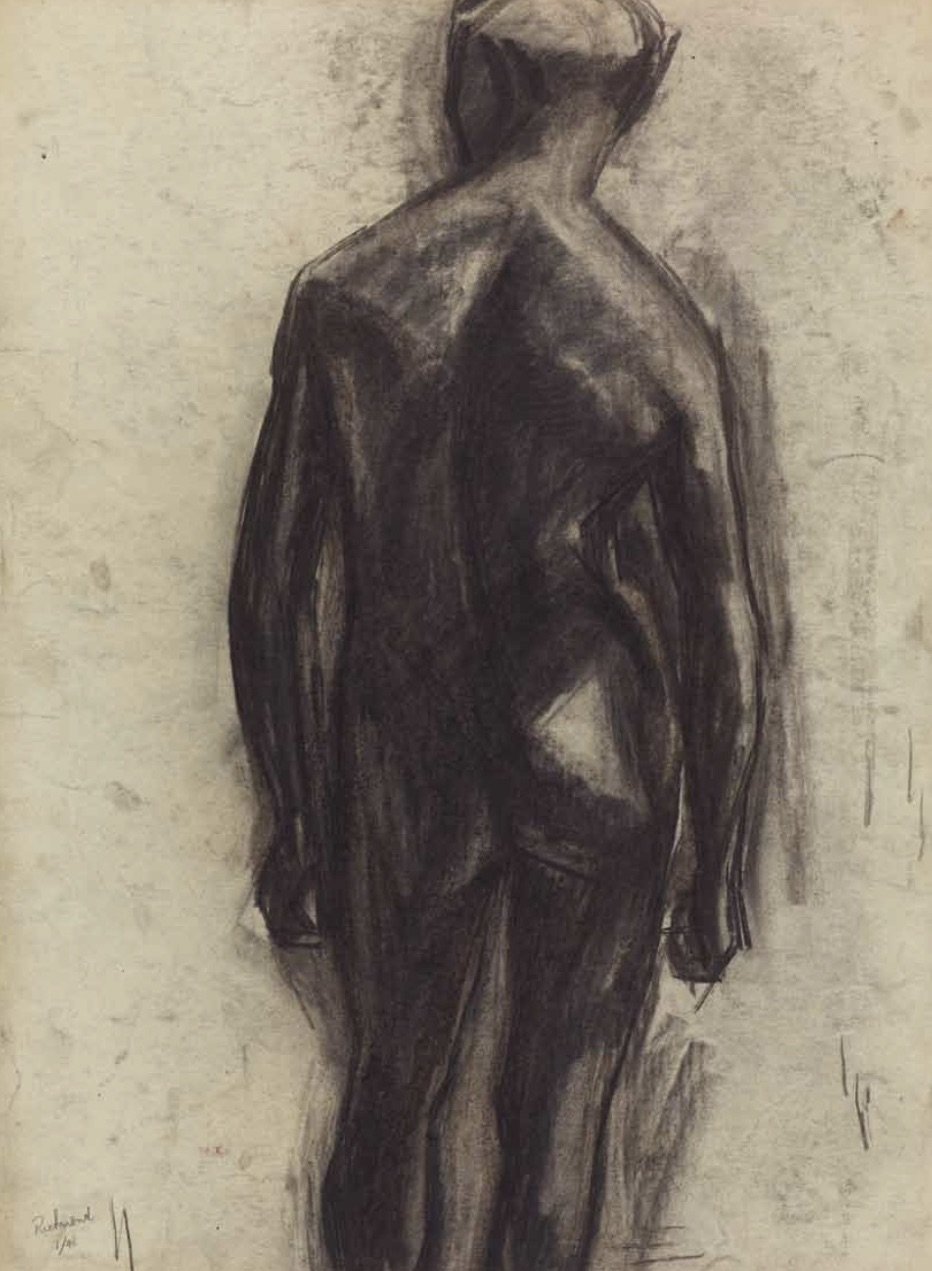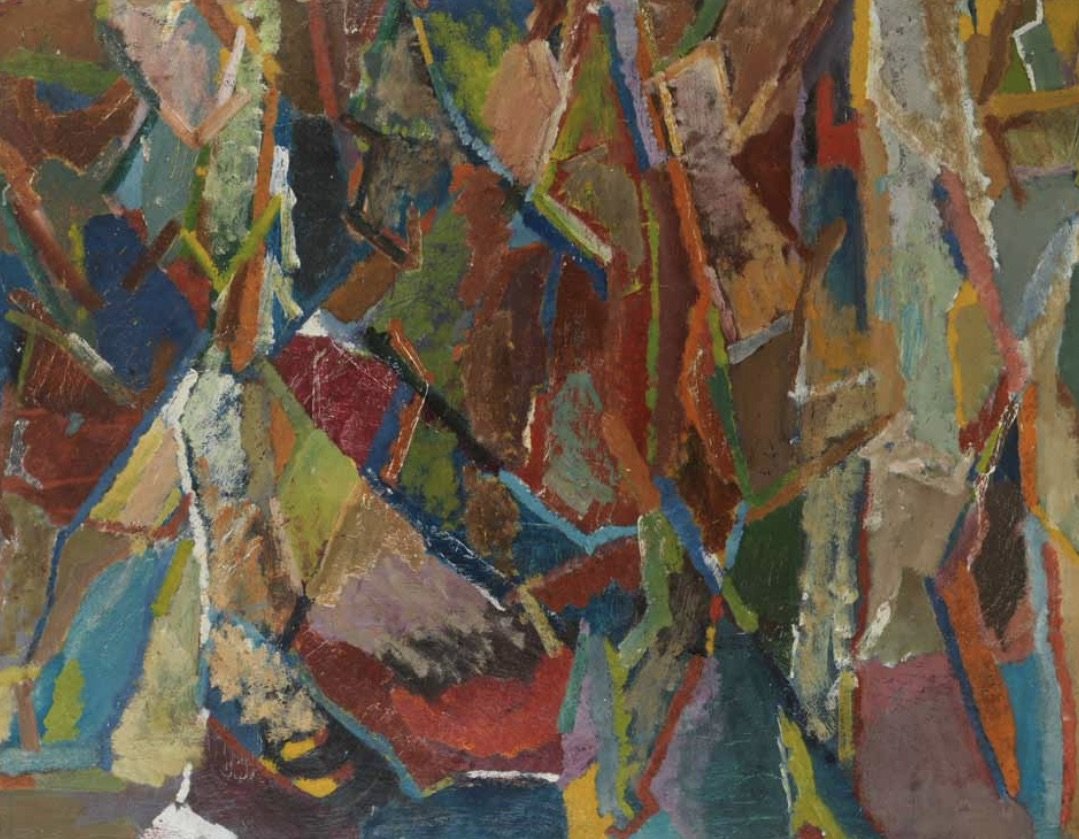Richmond made countless life studies at Bomberg’s Borough classes, none of which depicts an identifiable model, but instead, focus solely on capturing conveying the model’s sense of energy, movement and mass.
Bomberg expected students to weigh their need for expression against intuition and direct observation; only then could they achieve both form and the idea of form: its mass and presence.
“Bomberg had this sort of idiom that allowed one to go for the essence at the very beginning, to adumbrate a figure in ten minutes and then... find different terms in which to re-state it until one got something... This wasn’t a question of display; this was a question of a private quest, which had certain results.”
- FRANK AUERBACH
Miles Richmond, Borough figure study (1948), charcoal
Richmond’s life studies eventually became the building blocks of his first major painting, Duino, Homage to Rainer Maria Rilke. Inspired by the fifth of Rilke’s Duino Elegies, in which the poet interpreted Picasso’s La famille de saltimbanques as ‘playthings in the hands of grief, continually twisted and turned’.
Duino, Homage to Rainer Maria Rilke (1948), oil on board;
Within a year, Bomberg had turned what began as a notional
teaching post into an informal art school, and urged by one student, Cliff Holden, he gathered together a group of like-minded students and formed the first Borough Group of painters.
The Group’s 1947 show at the Archer Gallery included Richmond’s London with St Paul’s, possibly painted from the school’s roof and later described by William Varley as: ‘A sombre Cézannesque articulation of planes... not so much painstakingly wrought as fought to the point of submission. It comes as something of a surprise to discover that Richmond conceived [it] in a spirit of
optimism.’
However by 1951, any such spirit had faded and members’ competing expectations and interpretations of Bomberg’s ideas led to rifts that disbanded the Group.
Richmond continued to exhibit his work in London with Holden and others, but soon left England after marrying Susanna Richmond (no relation).
From Provence, they moved on to the Malaga, where they heard that Bomberg was now in Spain, hoped to open an art school in southern Spain, and wanted Richmond to assist him. Moreover, he no longer wanted to teach in a classroom setting and believed that in Ronda he could help students better realise Cézanne’s ‘rediscovery that the world was round and there was a way out through the sunlight.’
